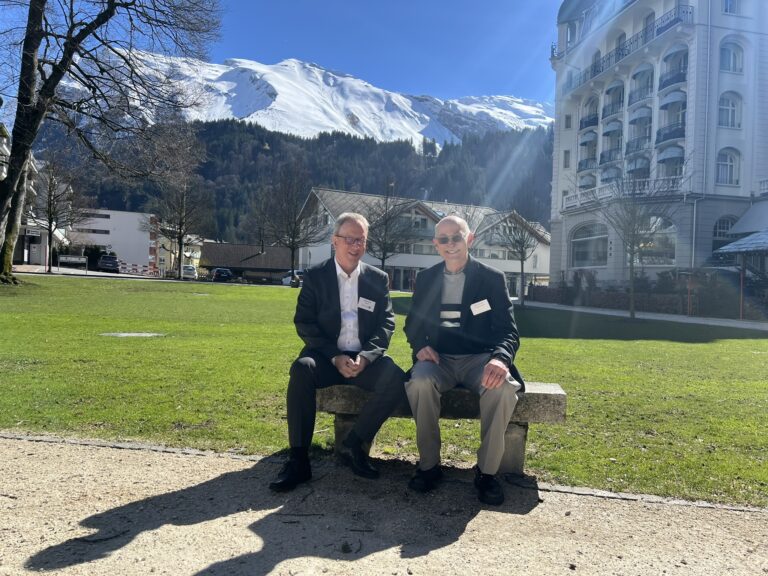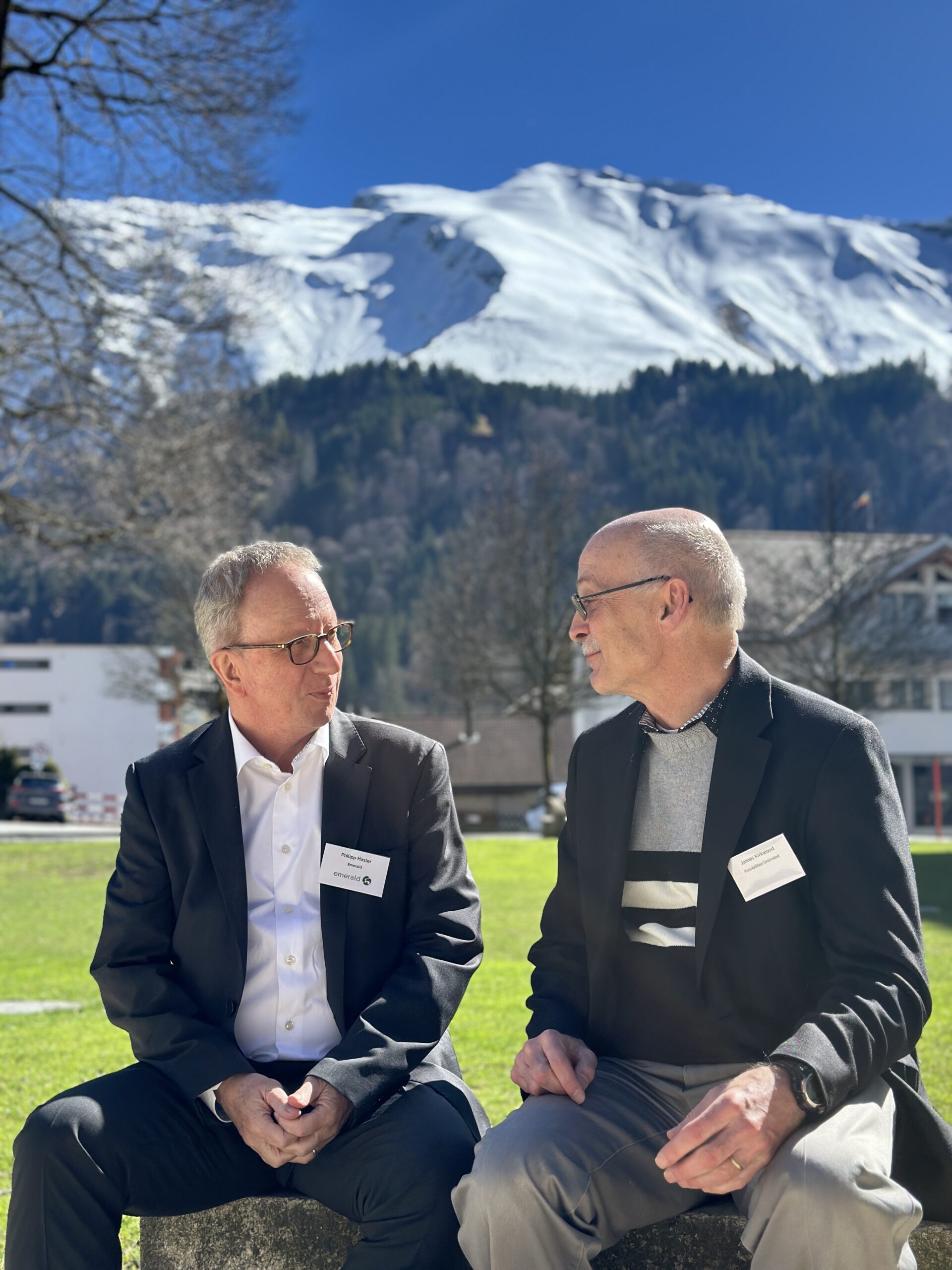Words of Wisdom from Emerald’s Advisory Council – Jim Kirkwood
In this interview, Philipp Hasler, and Jim Kirkwood, former Chief Science & Technology Development Officer at General Mills and current member of Emerald’s Advisory Council, discuss how the engines of transformation in the food and beverage industry have both evolved and stayed the same over the last 50 years. They look at the drivers of sustainable practices going forward and the role of emerging technologies in industry-wide change.

PHILIPP: What is the difference between transformation in the food and beverage industry as opposed to transformation in general?
JIM: It’s the same and it’s different. Every transformation must be based on innovation that is game changing. Where food and beverage is different is that there’s the technology piece of it, but then there is also the consumer piece of it. And you have to have both.
For instance, in the refrigerated milk market in the US, ultra-high temperature, short time processing was invented some time ago. A transformational technology that allowed many refrigerated dairy products to be able to go from refrigerated to long-life, shelf stable.
But even though that technology was 100% developed, there was no way that change would be adopted in the US at that time. It was because there was entrenched consumer behavior of, “If it’s fresh, it’s got to be refrigerated. And if it’s not refrigerated, then it’s not fresh.” There were all kinds of marketing techniques to try and change this, but still, no one would purchase it.
Just think of the sustainability of a refrigerated supply chain compared to a non-refrigerated supply chain! And a shelf life of a year compared to shelf life of two weeks! That transformation had to happen, but it didn’t.
Fast forward to 2012 in the US, when Mike and Sue McCloskey started a company called fairlife that began to make waves nationally. They had a vision for innovation in dairy which was built on separating the components of milk by ultrafiltration and then bringing them back together into the ideal nutritional mix for different applications. By doing this, quality was redefined from “freshness” to “nutritional efficacy” making shelf temperature state irrelevant.
By producing an aseptic, shelf stable, long shelf-life product that could also be sold refrigerated, they proved to consumers that it didn’t matter. This removed the barriers to mainstream use of shelf stable milk. Plus, it’s an amazing sustainability story. The whole brand was built around that. And because of the influence of the founders, their unique brand strategy, and a smart strategic partnership with Coca-Cola, consumers thought it was cool to have the shelf stable milk that came from fairlife. Once it became cool, the transformation just happened!
PHILIPP: So would you say that this consumer engagement is unique to the food and beverage industry, or do we see this also in other industries? You could look at Apple mobile phones or Tesla cars. Is it the same type of consumer engagement, or is it somehow different?
JIM: I think it has to do with where you are on the continuum of consumer intimacy or consumer involvement. In areas where it’s not really that important to the consumer, you don’t need as much consumer engagement. But if you think about food, food is core to our culture.
When you get together with family, it’s around the table. Food is such a part of who we are as people that anytime you start to fool with that a little bit, there’s resistance. So it’s a very high involvement category.
The higher involvement of the consumer, the more entrenched their behavior is, the more difficult it is to change. And, thus, more effort is required to find ways instigate consumer change.
PHILIPP: Going back to the example you mentioned before, will this transformation be led by someone with a bold idea, who wants to change the world? Or do you think it is more a consortium type of approach?
JIM: The way I have seen it over the last 40 years, is that what drives it are founders’ brands. And founders’ brands and founders are everywhere, but most of them don’t make it. And so if we. as a company, want to make a change happen, and we know what changes we want to make, the goal is not necessarily just to go out and find a startup. Yes, that’s important, but also to go find a founder’s brand that can be brought together with that startup, so that you systematically go after that, rather than just let it happen.
Fairlife just happened. But it took 30 years. If we can define what we’re looking for, not only on the technology side, but also on the consumer side, and bring those two pieces together, we can drive adoption at much higher rates than we’ve been able to by just letting it happen.
PHILIPP: If you look at companies like yours, General Mills, you have a lot of very high value brands. You are a brand company like many other food and beverage companies. Let’s suppose you have such an entrepreneur who creates their own brand. Isn’t that a competitive situation? Or do you think more about how you want to engage with them? How defensive would a company like General Mills be in that situation?
JIM: Let me give another example.
In the late 70s, in the UK and in the United States, there were two founders’ brands. One was Cascadian Farm, led by a man named Gene Kahn in the US. And his vision was that the impact on the environment of food production should be completely neutral. He wanted to do everything he could to make that happen. And he was originally a farmer. So he started a company called Cascadian Farms. And in the UK at the same time, there was Alex Smith, who created Alara Whole Foods, and he had that same vision.
And they built their businesses. They were fringy at first, but that became the organic movement. That was a transformation in the foods industry, and it’s still changing the industry today. But how did it get there? These two guys didn’t do it. What happened was they started small businesses. And General Mills, being very astute to what was happening, identified these companies as important. That this was a change that was going to be critically important. And so General Mills went out and purchased Cascadian farms. Because there was public engagement in the organic movement, and once you have that, it’s cool. Then the corporates jump on it, and they want to make it happen.
The smart thing is when you can identify it ahead of time and know what it is you’re trying to do. And then you search the world just like you do for startups, you search the world for the founders that are going to make that happen.
PHILIPP: What do you think if you look at the F&B industry and transformational change? Is it faster, or slower than others, or what are the typical time horizons for change? For example, let’s say we invest in a startup today and we want to sell in five years. Is this at all possible in the F&B space or do we need to change our strategy, how we would make investments in that area?
JIM: Five years I think is doable, but possibly a little longer. There are two ways you can do it in the food industry. One is that you do it intentionally and you get consumers to drive it. The other is that you do it completely transparently so that consumers do not understand or see the difference at all. The ones that are done completely transparently, from a consumer standpoint, can be done very quickly because they are driven entirely by technology. But it has to be completely transparent to the consumer. It can’t taste different, it can’t look different, it can’t be different. It can’t impact this high involvement experience that we have in the food industry. If you impact that, you have to go the consumer route.
As I mentioned before, as we work in the transformational area, we don’t have to rely on chance anymore. That is what’s happened in the past. But now, if we want to make meat by taking pea protein and extruding it into a texturized product, we can make a consumer plan and we can find a founder who’s going to be able to do something about it. I just learned about the Swiss company planted. They’ve basically done that. So if you are a person who has the technology, you need to think about how to find the person who has the vision and then make that connection happen. Then, by design, rather than by chance, you can make transformation happen fast.
